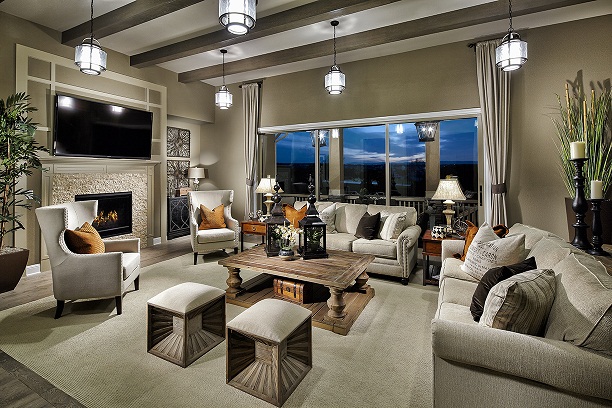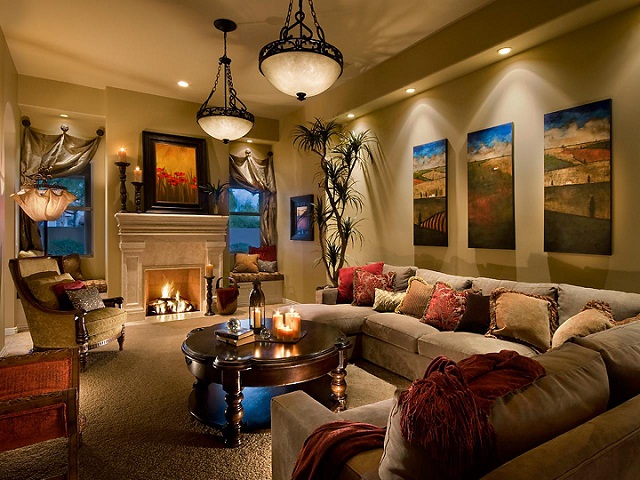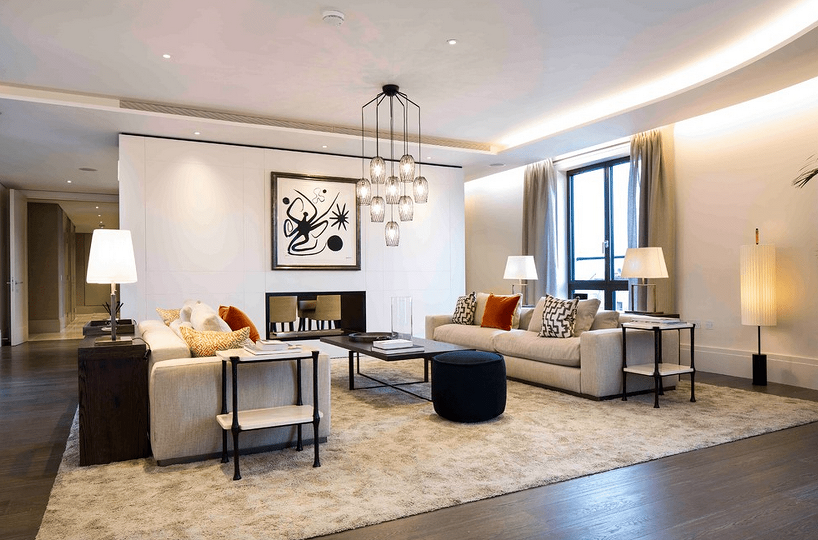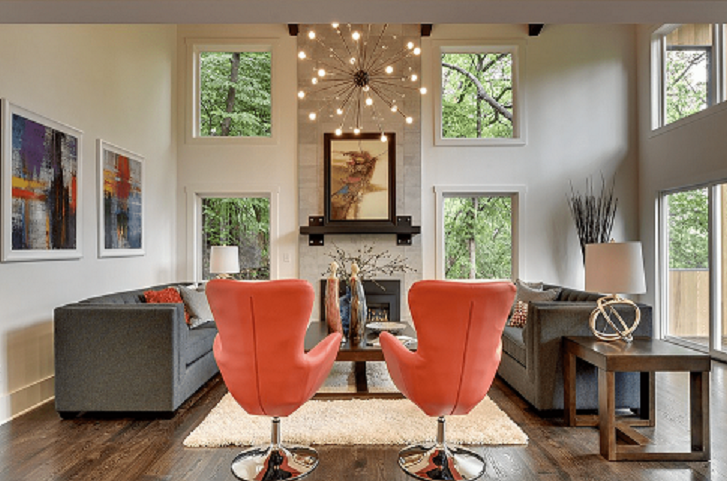Bear in mind that the living room manages to be, 9 times out of 10, the most dynamic spaces in a home. After all, its name pretty much says it all: it’s where most of the “living” does happen.
We’re doing a lot of things in the living room. We hang out, lounge, spend some quality time together with your family and friends, relax, watch TV or read a book. No matter what we’re doing in the living room, we need the right lighting for each type of activity as one source of lighting isn’t going to do it.
Combining three different types of lighting (ambient, task and accent lighting) is the best solution for creating an effective lighting arrangement in a living room. Every type of lighting is going to work for a specific type of activity. Using all the three of them is going to illuminate your living room the right way, no matter what you’re doing.
How to work with ambient lighting?

Aka the “general lighting”, the ambient lighting is an even layer of illumination that is going to fill the whole living room. We typically use this type of light for avoiding the furniture when walking in a room, entertaining some guests, playing various games or searching for the remote control.
We also use ambient lighting for offsetting the brightness from task lights, TVs, computer screens as we don’t want any glare. We also want less strain for our eyes.
Most of the time, you’re going to place the ambient lighting above the table. Floor lamps can work too as ambient lights,and at Furnilly , you can find an impressive collection of lights at
The most efficient way to obtain ambient light in your living room is the ceiling lighting. A semi-flush/flush mount ceiling light, centred in the room, is going to give light throughout the whole room in an even way. You can go with a chandelier or an impressive pendant light functioning the same as a close-to-ceiling fixture. Besides, they’re going to make a nice impression and give the room a special vibe.
Ambient light can give a room a special feel. You should also use a dimmer switch for controlling the light (instead of the traditional on/off switch). You may play with the intensity of the light, going from the bright and generous light to the low, subtle light that helps you relax while watching a nice movie.
It’s common for living rooms not to have a focal point (there are so many things happening in a living room!). think about installing a chandelier/pendant light over the table/ottoman for a balanced look and a visual effect in the living room.
How much task lighting do you need?

Task lighting is bright and directional and you use it for special activities (reading is one). Many forget about the task lighting in the living room as it does seem bright. However, using focused lighting may actually be good for your eyes. It’s a localized type of light and we only use it from time to time.
You may create task lighting in your living room with some table lamps or floor lamps with adjustable heads. For best results, you should look into a reading table lamp, placed next to your sofa/lounge chair for casting light right on your book/activity.
This placement is great for an arc floor lamp or a reading floor lamp. However, you may also place them behind seating as they’re quite large.
Don’t forget about installing an adjustable wall sconce for getting the same type of lighting.
A modern option to a typical reading table lamp is the desk lamp that can work as a task lighting in a living room. It should be an adjustable lamp with focused a directional light that you can use for working or reading. When you’re not using it as a task lamp, you may adjust it for shining bright light to a centrepiece/piece of décor (that you want to highlight).
Don’t forget about the accent lighting!

Accent lighting is the final touch in terms of lighting for a living room. It gives drama and visual interest to your living room, fighting any harsh brightness of the task lights.
You can use accent lighting for any artwork/pictures on walls or other architectural details that you want to highlight. They can make a room feel larger if placed in dark corners. You may also use them for balancing the bright light from the task lights, creating a relaxing and comfortable feeling in any room.
Placing a table lamp or a floor lamp in a corner may work great as accent lighting. This type of placement makes any living room feel larger, as it gives more light to space where the ambient light doesn’t reach enough.
In the case of a small living room (with limited floor space), it’s best that you add accent lights to the dark spots. Use recessed lighting or track lighting in this case. You should also place the ceiling light all along the perimeter of the room, having the light focused right on difficult to light areas.
When you want to help your fireplace (or any other architecture details) stand out, you should think about using track lighting. Every track head may be positioned independently.
Keep in mind that you can also use the wall sconces as accent lighting in a living room. Not only that they highlight the areas/details you want, but they also reflect light off the walls. This is also going to improve the ambient light in the centre of your living room.
Funny enough, wall sconces aren’t just a way for layering accent light in a living room, but they work as wall art too. adding just a single decorative wall light or several fixtures to a living room can create a vibrant displace that is both functional and energetic. Talk about dynamic design!
One last tip
Don’t let the variety of lighting overwhelm you. As long as you’re keeping in mind the main types of lights to use in a living room, you shouldn’t have major problems getting the light you want in the living room.






